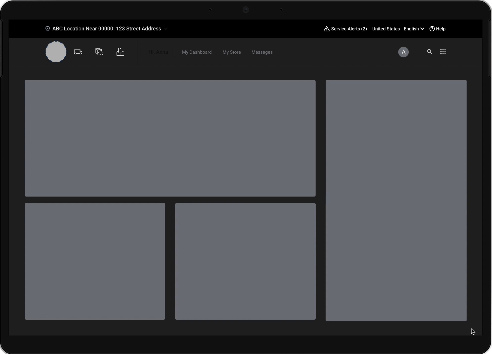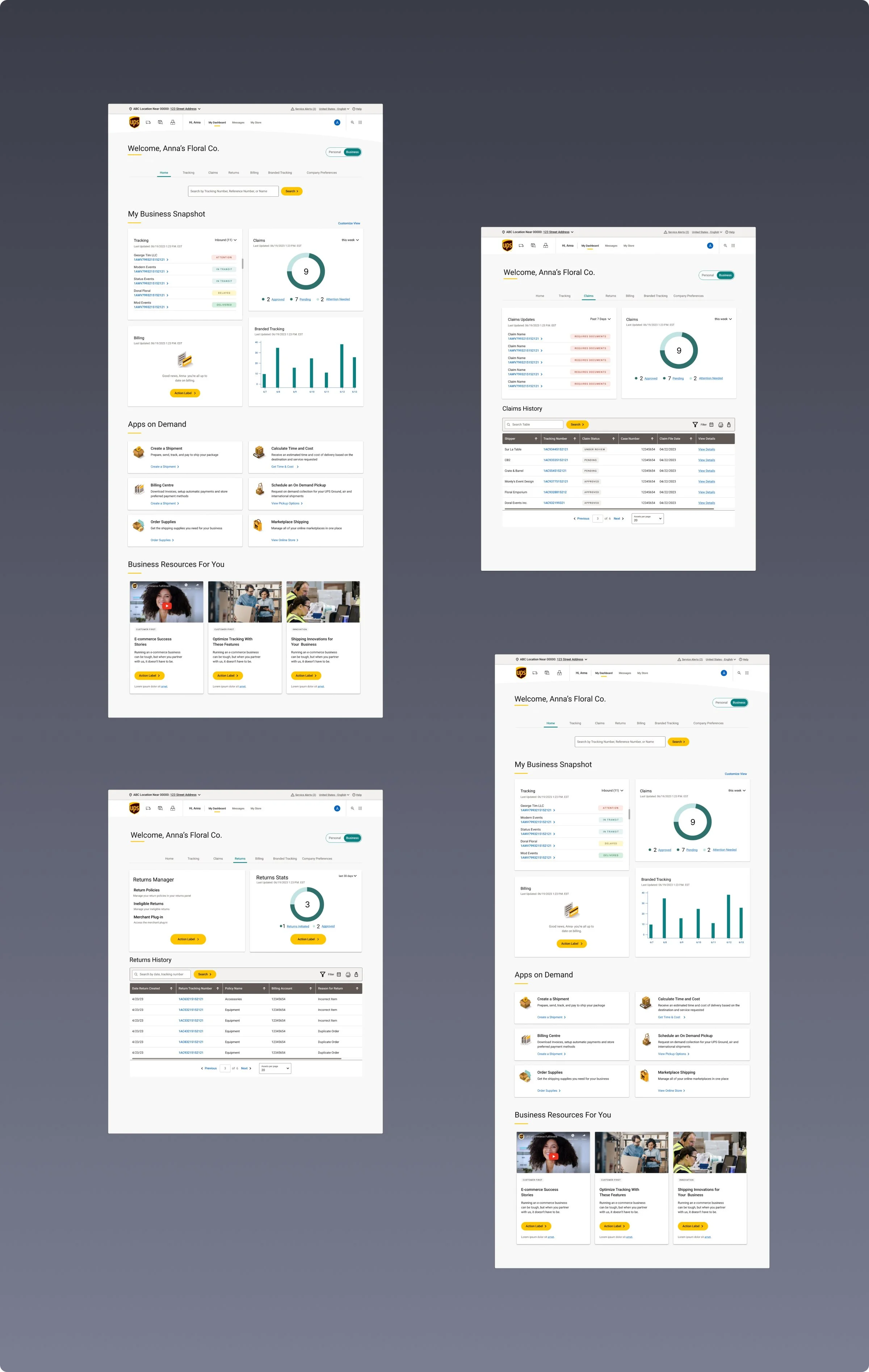UPS
Elevating the UPS Merchant Hub for Small and Medium-Sized Enterprises
Role: Senior Associate, Product Design
Completed: 2023
Background
UPS has always been at the intersection of human interaction and design – but the world is evolving. Customer insights are more personal than ever, new tech crops up every single day, and the AI revolution has only just begun.
Taking these changes into account, my team at Material determined that now is the perfect time to reflect on the strides made and the opportunities that stood before us.
By resurfacing the guiding principles for the design of Merchant Hub For Business, our team consulted on bridging the MVP state of the product with the future context of the experience.
How do the tenets of flexibility, customization, and delight manifest in the future state of MC4B? The approach began with thorough partnering with user research to uncover the real-world challenges SMEs face when dealing with shipping logistics.
As a consulting product design associate, I worked concurrently with the UPS research team to translate insights from their initial research into an interactive prototype that simplifies SME interactions with UPS services.
Challenges
Fluctuating Design System: The UPS design system was undergoing constant updates and changes, making it challenging to maintain design consistency and integrate new components seamlessly.
Managing Client Relationships: Balancing the diverse expectations and requirements of multiple stakeholders within UPS, while advocating for user-centered design solutions.
Complex User Needs: SMEs had varied and complex needs across different shipping stages, requiring a flexible and adaptable design approach.
How do the tenets of flexibility, customization, and delight manifest in the future state of MC4B? The approach began with thorough partnering with user research to uncover the real-world challenges SMEs face when dealing with shipping logistics. As a consulting product design associate, I worked concurrently with the UPS research team to translate insights from their initial research into an interactive prototype that simplifies SME interactions with UPS services.
Design Principles
The objective was to elevate and increase the usability of the landing page for the UPS Merchant Hub, tailored specifically for small and medium-sized enterprises (SMEs). The prototypes served to address the SMEs' pain points and needs throughout their shipping processes (pre-, during, and post-shipping) and to translate these insights into an intuitive design that simplifies their interactions with UPS services.
Flexibility: How does flexibility manifest in the current experience and beyond?
How are we compromising these themes in the current experience?
What does flexibility mean to business owners? To stakeholders?Customization: How does customization manifest in the current experience and beyond? How can we make business owners feel special, seen, and heard? What can we do to make their lives easier?
Delight: How does delight manifest in the current experience and beyond? What makes something delightful? Why is delight so impactful?
Design Iterations and Prototyping
Using these insights, we embarked on the design phase, creating user flows and interactive prototypes in Figma. The iterative process involved several stages:
Initial Prototypes:
Developed interactive prototypes to visualize potential solutions and gather initial user feedback.
These prototypes were tested with SME users to assess usability and functionality.
Iterative Refinements:
Based on user feedback, we refined the prototypes, enhancing key features and simplifying complex flows.
We maintained ongoing collaboration with the internal UPS design team to ensure our designs were compatible with the evolving design system.
Navigating a Fluctuating Design System:
Given the constant updates to the UPS design system, we had to be flexible and adaptive, ensuring our designs remained consistent and cohesive.
For components that required deviations or additions to the design system, we presented detailed business cases justifying their necessity and aligning them with both user and business needs.
Results
The final designs for the Merchant Hub landing page provided a user-centric experience for SMEs, including:
Simplified Navigation: Clear and intuitive pathways that allowed users to quickly find the information and tools they needed.
Enhanced Tracking Features: Advanced tracking capabilities offering real-time updates and detailed shipment information.
Batch Processing Tools: Efficient tools for handling multiple shipments, reducing the time and effort required by users
Outcomes and Impact
The redesigned Merchant Hub landing page received overwhelmingly positive feedback from SME users, who appreciated the streamlined navigation and enhanced functionality. Key feature opportunities identified during our research led to the successful implementation of new components in the UPS design system. These additions significantly improved the user experience and operational efficiency for SMEs.
Conclusion
This project highlighted the critical role of deep user research and iterative design in crafting solutions that meet the specific needs of target users. By focusing on the unique challenges faced by SMEs and effectively managing the complexities of client relationships and a fluctuating design system, we delivered a solution that not only met but exceeded user expectations.



